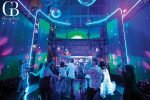Overcoming Societal Problems

How the science of perception can help keep innocent people out of jail.
People wrongfully accused of a crime often wait years – if ever- to be exonerated. Many of these wrongfully accused cases stem from unreliable eyewitness testimony.
In the United States, nearly 70 percent of DNA exonerations are due to misidentifications by eyewitnesses, according to the Innocence Project. To overcome this societal problem, research has focused on factors that influence the likelihood that a witness will identify the correct person.
One key factor is the way individuals are presented to the eyewitness during the lineup, says Salk Professor Thomas Albright, who co-chaired a National Academy of Sciences committee to examine the validity of eyewitness identification. Albright, an expert in the fields of visual perception and recognition, taps into decades of research suggesting that people commonly misperceive visual events, and memories of those events are continuously augmented and deteriorate over time.
Currently, the two most common lineup methods used by law enforcement are known as simultaneous and sequential lineups. In the simultaneous method the eyewitness views six photographs of individuals at the same time; in the sequential method the eyewitness views six photos, one at a time. The witness then either identifies a suspect or rejects the lineup if no face matches their memory of the crime scene. Recently, Albright and Salk Staff Scientist Sergei Gepshtein published a report in the journal Nature Communications describing a new way of presenting a lineup to an eyewitness that could improve the likelihood that the correct suspect is identified and reduce the number of innocent people sentenced to jail.
“Misidentification by eyewitnesses is a long-standing problem in our society. Our new lineup method uncovers the structure of eyewitness memory, removes decision bias from the identification process, and quantifies performance of individual witnesses,” Albright shared with GB Magazine. “This study is a great example of using laboratory science to bring about criminal justice reform.”
The scientists used a technique called the method of paired comparisons, which works similar to an eye exam: just like an optometrist presents a patient with pairs of lenses and asks which lens is better, number 1 or number 2, the eyewitness is shown two photographs of individuals at a time and is asked to choose which one looks more similar to the person they remember from the crime scene. The procedure, which is repeated using many different combinations of paired photos, yields an estimate of the strength of a person’s memory for each face. Statistical analysis of these memory strengths then reveals the chances that the eyewitness is correctly identifying the culprit.
The new method yields greater information about the identity of the culprit than previous methods. What is more, it offers an unprecedented quantitative index of certainty for individual eyewitnesses, which is what the judge and jury really need to know. The paired comparison lineup holds much promise as a research tool as well as a practical tool for investigation and prosecution of crimes. The authors hope that the new technique will soon be applied in real police casework, leading to more correct identifications and fewer wrongful convictions.
“Convictions should be based on science, not precedent,” says Albright.
To learn more about this field of research and listen to an interview with Albright, check out the upcoming season of Where Cures Begin podcast on www.salk.edu/podcast, iTunes or other podcast platforms. For more information about the Salk Institute, please visit: www.salk.edu.





